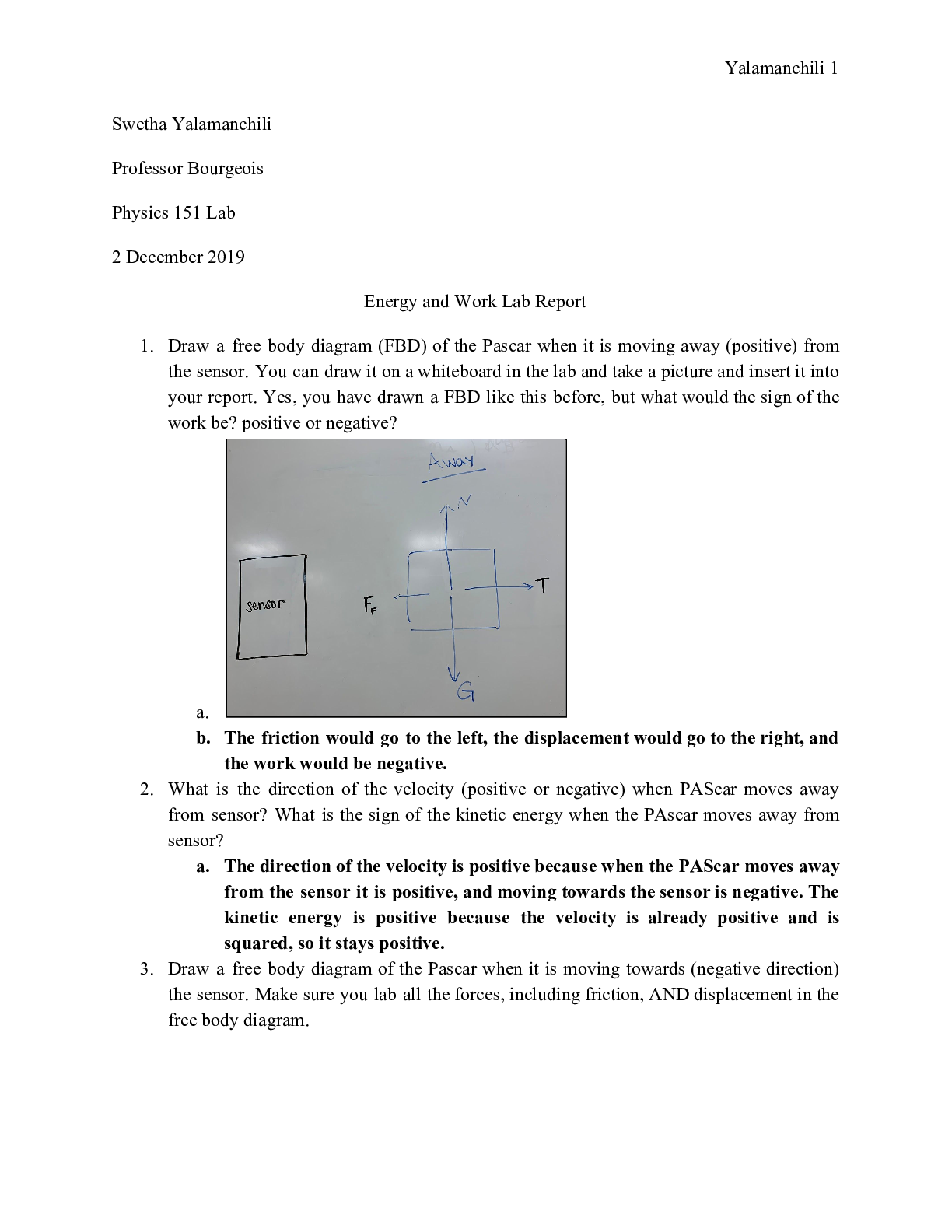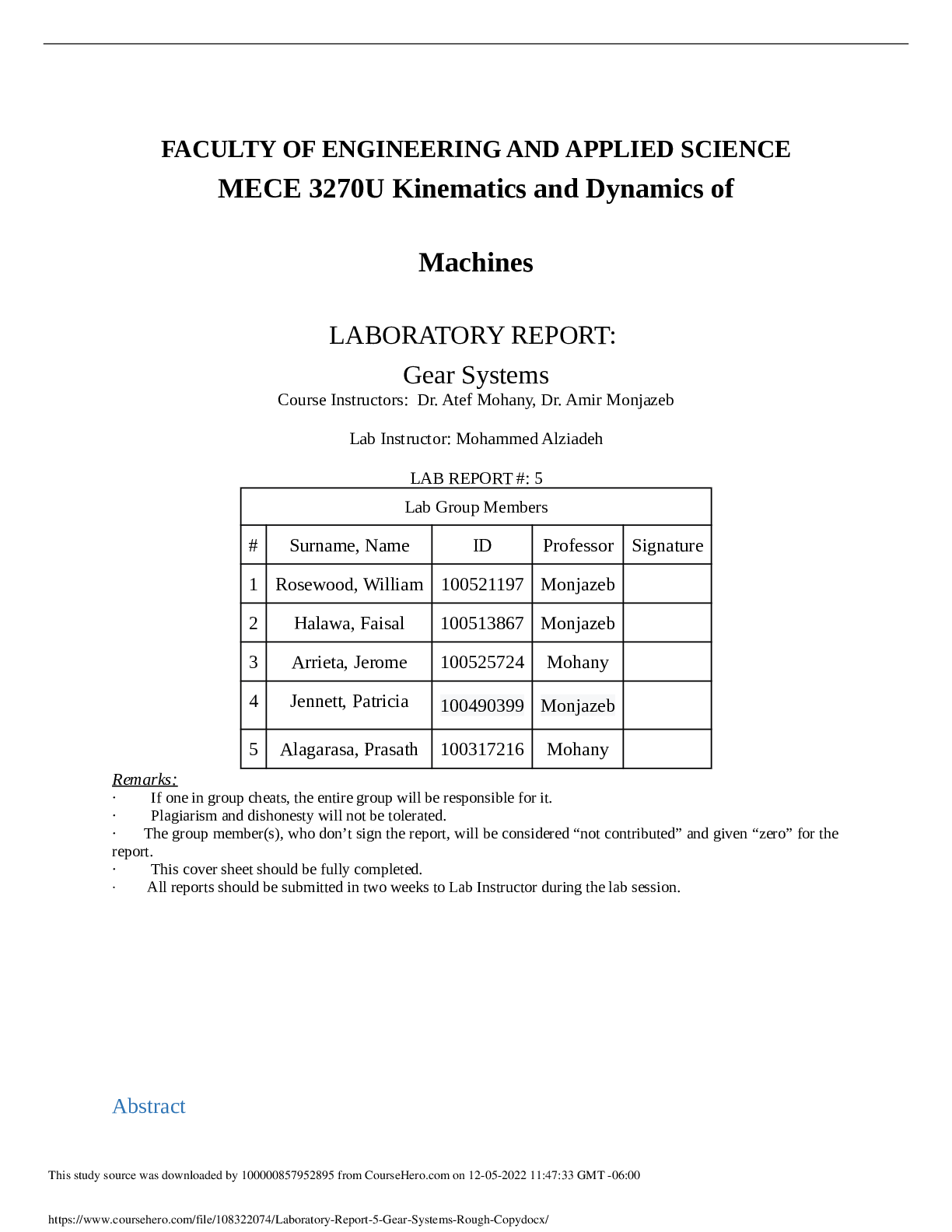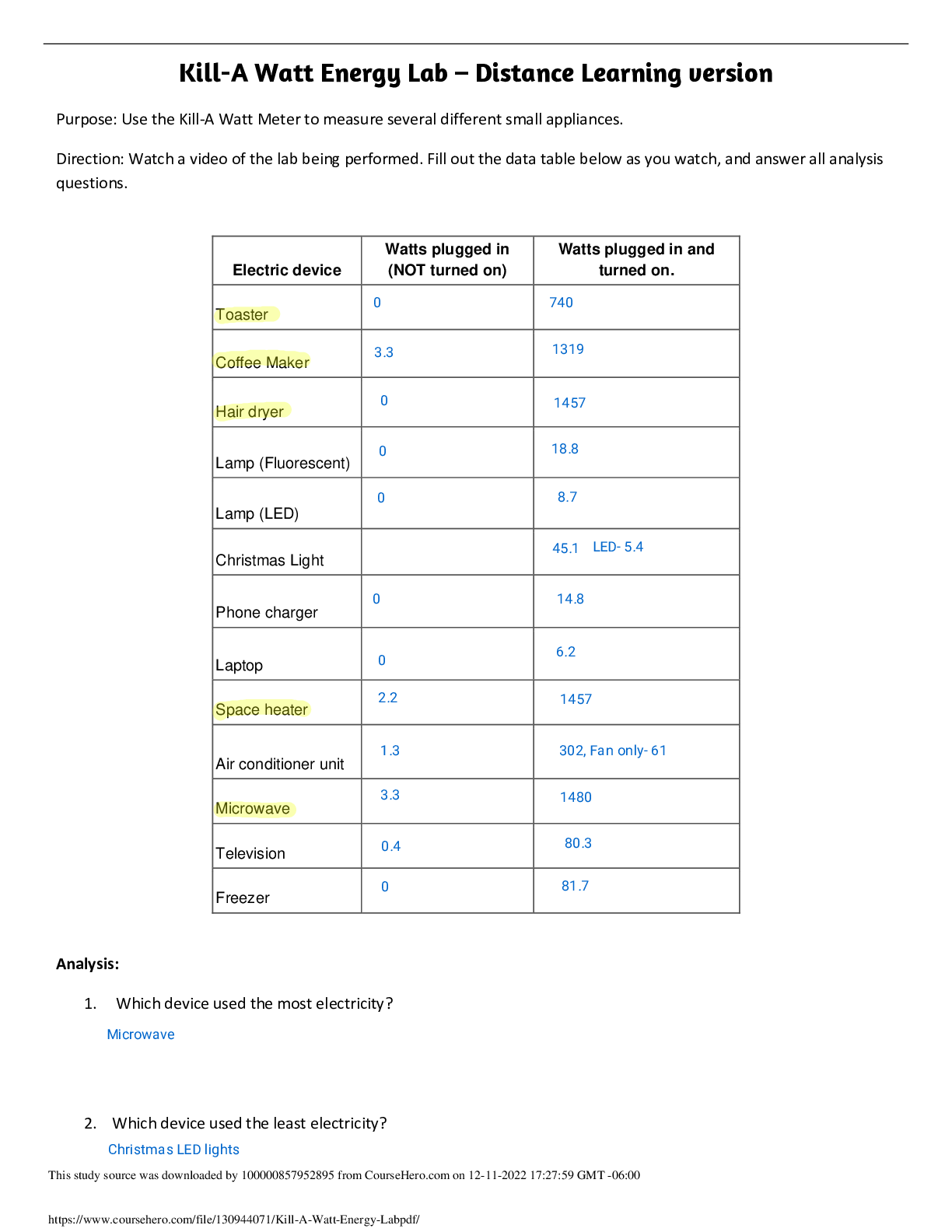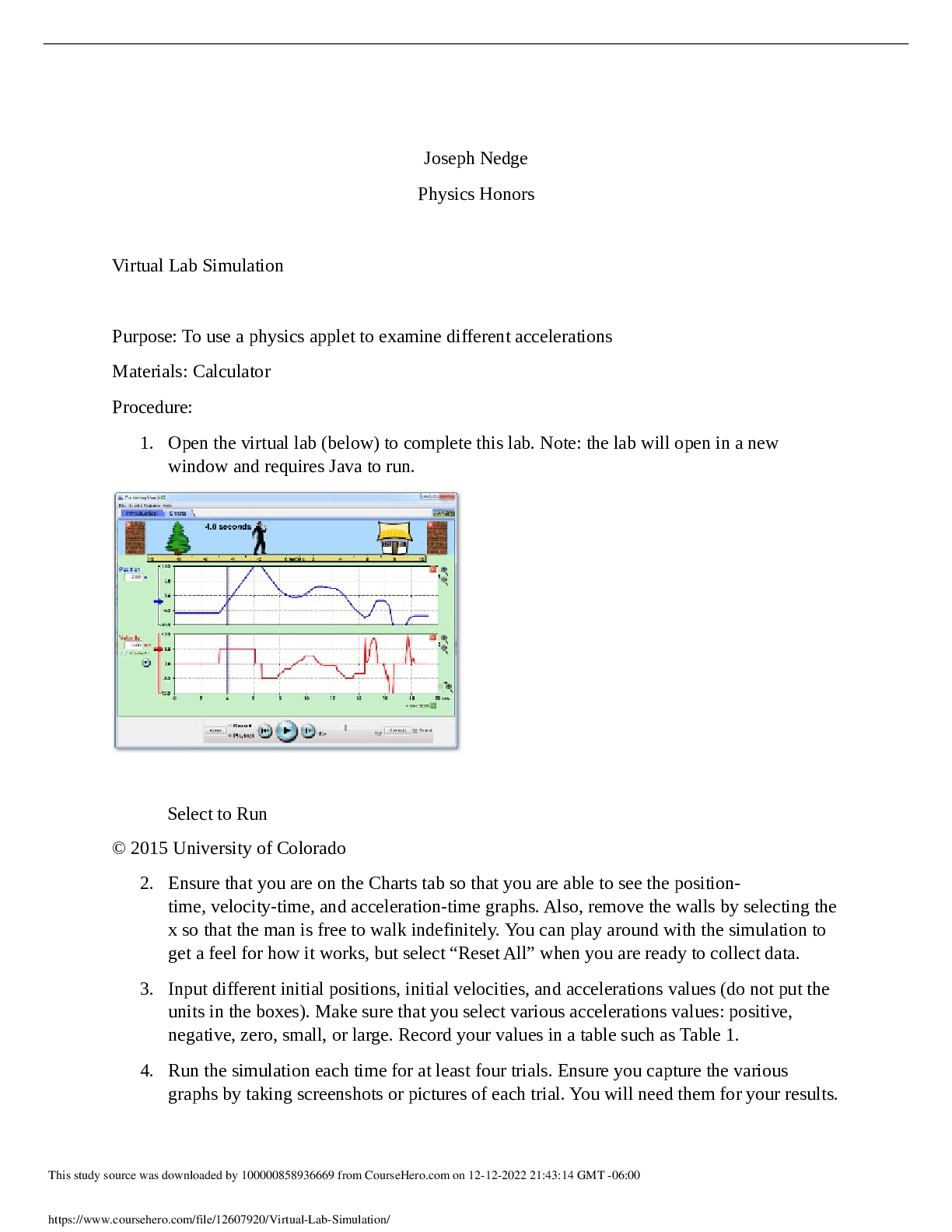Physics > Lab Report > Energy and Work Lab Report University of Massachusetts, Amherst PHYSICS 151 (All)
Energy and Work Lab Report University of Massachusetts, Amherst PHYSICS 151
Document Content and Description Below
Energy and Work Lab Report 1. Draw a free body diagram (FBD) of the Pascar when it is moving away (positive) from the sensor. You can draw it on a whiteboard in the lab and take a picture and insert... it into your report. Yes, you have drawn a FBD like this before, but what would the sign of the work be? positive or negative? a. b. The friction would go to the left, the displacement would go to the right, and the work would be negative. 2. What is the direction of the velocity (positive or negative) when PAScar moves away from sensor? What is the sign of the kinetic energy when the PAscar moves away from sensor? a. The direction of the velocity is positive because when the PAScar moves away from the sensor it is positive, and moving towards the sensor is negative. The kinetic energy is positive because the velocity is already positive and is squared, so it stays positive. 3. Draw a free body diagram of the Pascar when it is moving towards (negative direction) the sensor. Make sure you lab all the forces, including friction, AND displacement in the free body diagram. Yalamanchili 2 a. b. Friction would go to the left, displacement would go to the right, and work would be negative. 4. What is the direction of the velocity (positive or negative) when PAScar moves towards the sensor? Is the sign of the kinetic energy towards the sensor the same as when the PAScar moves away from sensor? Explain why or why not. a. The direction of the velocity is negative because when the PAScar moves away from the sensor it is positive, and moving towards the sensor is negative. The kinetic energy is positive because, even though the velocity is negative, the velocity is squared, so it becomes positive. 5. In the Google Sheet record the position and velocity of the PAScar as it moves away from the sensor for about 5 or 6 positions including the at rest position. Record the value on the page tabbed 5, 10, 15, and 20 grams at the bottom of the Google Sheet. a. https://docs.google.com/spreadsheets/d/18UwIQiAJu_jvgp0cMR8zjq7Enmq5dk6 opWo5rpaY9Lc/edit?usp=sharing Hanging Mass (kg) 0.005 0.01 0.015 0.02 Position (m) 0.62 0.64 (at rest) 0.62 0.62 0.63 0.64 0.63 0.62 0.71 0.7 0.71 0.68 0.84 0.83 0.82 0.82 0.99 0.97 0.98 0.97 Velocity (m/s) 0.00 0 0 0 0.06 0.05 0.09 0.05 0.15 0.2 0.28 0.26 Yalamanchili 3 0.25 0.32 0.4 0.46 0.32 0.45 0.57 0.66 6. In the Google Sheet make a plot of position vs. velocity. Is the plot a straight line? Would you expect it to be a straight line? Explain. a. According to our data, the plot of position vs time will be a straight line, because the position and velocity are essentially changing at a constant rate. This is actually not what I’d expect. With the velocity increasing, I’d expect the position to change at a greater interval, despite our data presenting a constant interval of change for velocity (.05 m/s) and position (.05m). 0.005 0.01 0.015 0.02 7. Calculate the displacement of the PAScar in the Google Sheet. Subtract the position at rest from each of the other positions you measured. Hanging Mass (kg) 0.005 0.01 0.015 0.02 Yalamanchili 4 Displacement 0.00 0 0 0 0.01 0 0.01 0 0.09 0.06 0.09 0.06 0.22 0.19 0.2 0.2 0.37 0.33 0.36 0.35 8. Calculate the tension in the string for each position recorded. Hanging Mass (kg) 0.005 0.01 0.015 0.02 Tension (N) 0.00069 0.000271 0.00672 0.00848 0.00069 0.000271 0.00672 0.00848 0.00069 0.000271 0.00672 0.00848 0.00069 0.000271 0.00672 0.00848 0.00069 0.000271 0.00672 0.00848 9. Calculate the square of the velocity for each position recorded. Hanging Mass (kg) 0.005 0.01 0.015 0.02 Square of the velocity (m2/s2) 0 0 0 0 0.0036 0.0025 0.0081 0.0025 0.0225 0.04 0.0784 0.0676 0.0625 0.1024 0.16 0.2116 0.1024 0.2025 0.3249 0.4356 10. Calculate the work done on the PAScar for each position recorded. a. Work = change in KE; because the initial velocity is 0m/s, work will be equal to 1/2mv^2, where v refers to the final velocity. Additionally, there is very little friction on [Show More]
Last updated: 2 years ago
Preview 1 out of 8 pages

Buy this document to get the full access instantly
Instant Download Access after purchase
Buy NowInstant download
We Accept:

Reviews( 0 )
$6.00
Can't find what you want? Try our AI powered Search
Document information
Connected school, study & course
About the document
Uploaded On
Dec 12, 2022
Number of pages
8
Written in
Additional information
This document has been written for:
Uploaded
Dec 12, 2022
Downloads
0
Views
89













